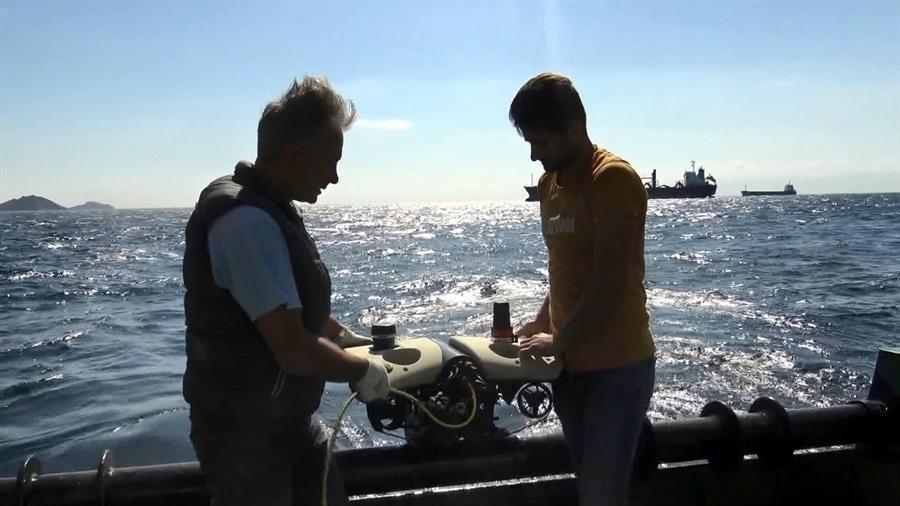
A group of scientists from Istanbul University has lowered a robotic camera into the Marmara Sea, monitored biodiversity and took samples from living creatures at a depth of about 200 meters for further evaluations.
Researchers and academics from Istanbul University's Faculty of Aquatic Sciences initiated a study focusing on the biodiversity of some organisms such as sponges, corals, and hydroids in the deep waters of the Marmara Sea. As part of this two-year endeavor, scientists embarked on their second journey to the Marmara Sea aboard the university-owned research vessel "R/V Yunus-S."
During this expedition, the team employed a robotic underwater imaging device referred to as "ROV" to descend into the lightless depths of the Marmara Sea at a depth of 200 meters. The ROV captured real-time imagery, which was displayed on computer screens, as a robotic arm attached to the device allowed for the retrieval of samples from the seabed.
Bülent Topaloğlu from the team clarified that the project aimed to shed light on the status of communities inhabiting the depths of the Marmara Sea, which are not reachable with current diving technologies.
Stating that their project is a synthesis research, Topaloğlu noted that it marked the first instance in Türkiye of visually documenting these organisms using an underwater robot.
Topaloğlu also highlighted the significance of their ability to selectively collect crucial specimens using the robot's arm, “a relatively uncommon practice in Türkiye.”
“We will take an important step towards better understanding the depths of the Marmara Sea as there is no light in Marmara after a certain depth. This knowledge could pave the way for the development of effective conservation strategies," Topaloğlu said.
In addition to the robotic equipment, the team also utilized a light meter developed by a faculty member.
Eda Topçu, an academician who has been conducting scientific research on corals in the Marmara Sea for an extended period, said that she has dived to a depth of 40 meters with a tube on her back to detect and monitor coral communities off Princes’ Islands, the southern part of the Marmara Sea.
“However, we wonder what lies beyond that. We established this project to determine which corals exist at depths of 50 meters and beyond, their specific depths, and to identify the sponges and hydroids that coexist with these corals,” Topçu explained.